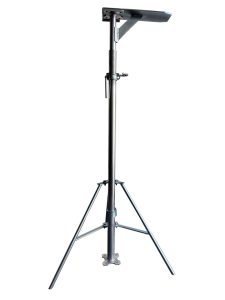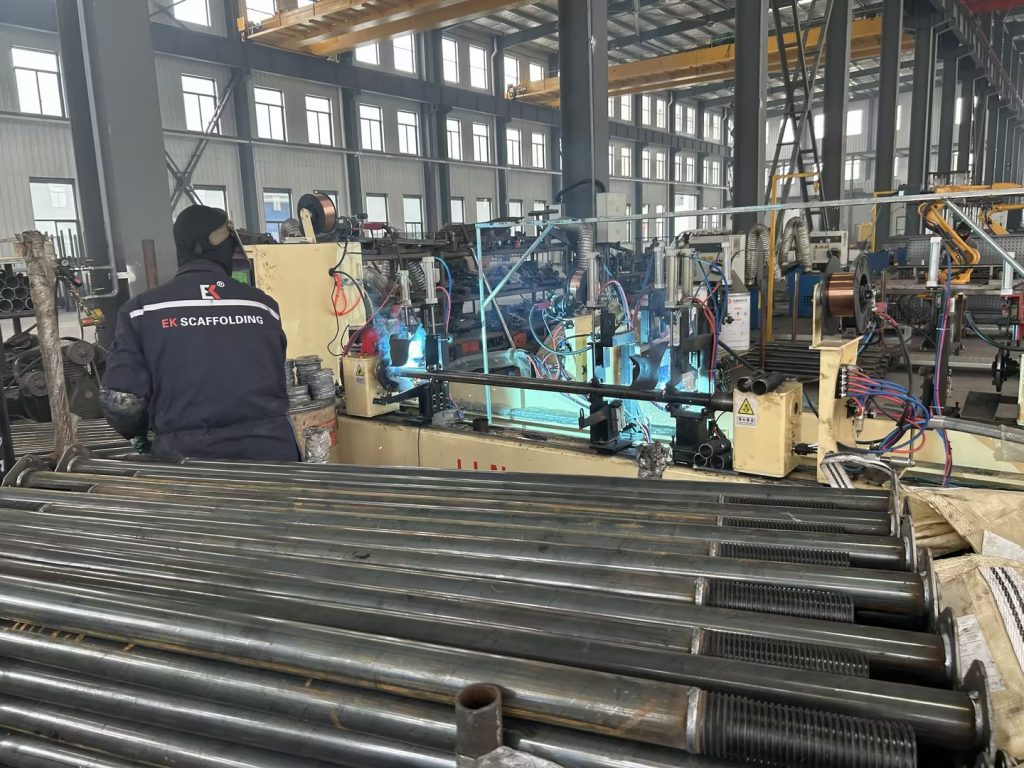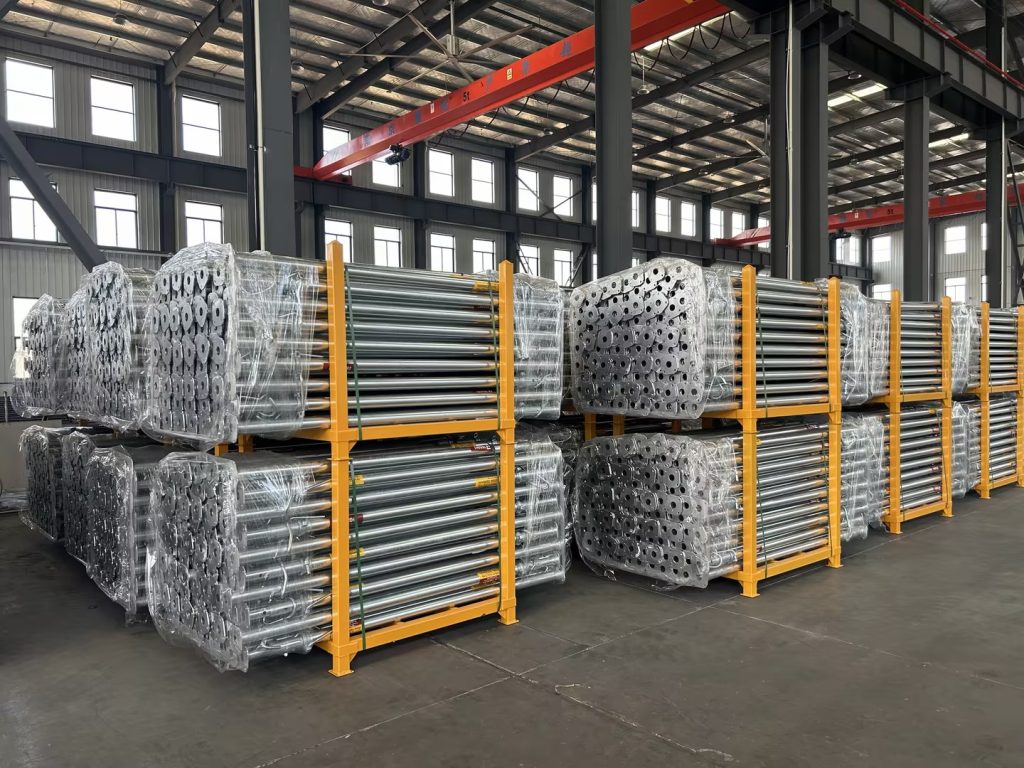A scaffolding prop is a temporary or permanent form used for pouring concrete and supporting floors, beams, and walls until the concrete cures and reaches sufficient strength to withstand the load. Scaffolding props are adjustable, easy to install and remove, and can accommodate varying heights and load capacities. Typically tubular and made of aluminum or steel, scaffolding props can accommodate a variety of loads and are suitable for various construction environments.
Scaffolding Prop Components
Inner Tube: The telescopic portion of the steel prop with a row of holes for height adjustment.
Outer Tube: The fixed portion of the steel prop that receives the inner tube.
Base Plate: The flat plate at the bottom of the steel prop that provides stability.
U-Head: The head of the steel prop that supports the beam load.
Tripod: An auxiliary component of the steel prop that provides stability.

The Importance of Scaffolding Props
Safety: Scaffolding props provide essential support for building structures, helping to maintain the shape and integrity of formwork, thereby ensuring the quality and safety of the structure.
Versatility: Scaffolding props offer a wide range of adjustability, adapting to varying heights and loads within a construction project. The versatility of adjustable scaffolding props allows for a wide range of formwork configurations.
Load Distribution: Scaffolding props are used to evenly distribute loads across the entire formwork structure, maintaining the integrity of both the formwork and the concrete structure.
Construction Efficiency: Scaffolding props can be quickly deployed and adjusted in height, saving valuable time and improving project efficiency.

Safe Use and Maintenance of Scaffolding Props:
Professional Installation:
Scaffolding props must be installed accurately and securely to prevent any potential hazards caused by installation errors.
Load Limits:
During use, the designed load of steel props must not be exceeded.
Avoid Modifications: Steel props must not be modified, removed, or replaced without professional expertise.
Regular Inspection:
Regularly inspect the overall condition of the steel props and promptly address any rust, cracks, and damage.
Anti-corrosion treatment: Regularly treat the steel props during use.
Timely maintenance:
Repair or replace any damage or abnormal bending.

Common Post Shore Problems and Solutions
Q: Rust on Post Shores
A: Post shores can corrode and rust over time, shortening their service life. Choose post shores that have been treated with rust-proof paint. Apply anti-rust paint to the surface to create a protective layer. Alternatively, use hot-dip galvanizing, which coats the surface with a zinc film to create a rust-proof layer. Regularly inspect the post shores and clean any rusted areas promptly.
Q: Loose Post Shores
A: Bolts and welds on post shores can become loose over time. Regularly inspect the post shore connections and tighten any loose bolts. Use anti-loosening bolts or locking devices.
Q: Post shore deformation.
A: Post shores may deform due to long-term overload. Ensure that the load capacity is not exceeded during use and replace any deformed post shores promptly. If the load capacity is exceeded, add more post shores or use higher-spec post shores to support the greater load.
